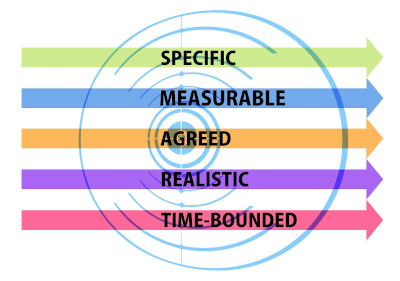How to Create a Successful Sales Plan


Last update on: 1 Sept 2025
Reviewed by: ![]() Michel van Hesse
Michel van Hesse
Writing a successful sales plan takes a considerable amount of time and effort. But don't let that discourage you! A good sales plan is definitely worth the effort. The plan provides a clear long-term vision. Various tasks and steps are clear, and your entire team works towards clear goals. This leads to more goal achievement and the growth of your organization. But what exactly is a sales plan? And what components should absolutely not be missing from the plan? We'll give you a clear explanation so that you can also create a good and operational sales plan.

Contents:
Are you looking for a definition of a sales plan? Or are you mainly wondering: how do I create a good sales plan? Before you can start setting up your sales plan, it's important to understand what a sales plan is exactly.
A sales plan is also called a sales plan. In short, it is a plan in which you describe your sales goals and how you will achieve them. You consider the various steps that need to be taken to reach your goals and the resources needed for this.
A sales plan is important for large companies with many employees and large accounts, as well as for self-employed individuals (ZZP'ers) who manage their own sales. By carefully thinking about the goals you want to achieve, you set more realistic goals. It also becomes clear how everyone within your organization can contribute to achieving these sales goals.
You can use a sales plan for both B2C and B2B sales. The foundation for these plans is the same, although the actual implementation naturally varies from company to company, situation to situation, and customer to customer.
A sales plan is a unique document for every business. The exact content depends on your situation in the market, your objectives, and your (potential) customers. However, we can provide some examples of what should definitely be included in a sales plan.
It can be very tempting to immediately put the sales goals on paper. However, it's better not to do this. Without a good analysis, you cannot set realistic goals, and your sales plan will not be successful. A SWOT analysis is very suitable for this purpose.
The analysis you make for the sales plan has multiple aspects. You analyze the market and where the opportunities lie. What are the pitfalls, and who are the competitors? How many opportunities does your company still have for growth? What is your ideal target audience, and how do you reach them? This applies to both B2B companies and B2C businesses. The target audience may differ, but the aspects to consider are the same.
During the analysis, don't just look to the future but also critically assess your company's current position. How is the company doing right now in terms of efficiency, costs, and customer contact, among other things? By knowing how your company is currently positioned, you can better determine where the significant opportunities lie.
It's also important to pay attention to your company's mission and vision. How will the world change in the coming years, and what role do you want to play in it? By formulating this, you will have a better understanding of the direction your company wants to take.
Once you know the current status of your company, you can start setting your goals. A sales plan is a multi-year project. This means that you set goals for the long term. Of course, you can also include short-term goals in your plan. These can be intermediate steps to achieve a long-term goal. For example, if you want to increase your revenue by 50% in five years, you can include a 10% growth for each year in your sales plan.
When setting goals, use the SMART technique. SMART stands for Specific, Measurable, Acceptable, Realistic, Time-bound. It is a way to measure whether objectives have been achieved or not.

Specific means that you must make a goal concrete. Not 'We want to achieve more revenue', but 'We want to achieve 5% more revenue'.
Measurable aligns with this as well. This means that the goal must be truly visible. You can calculate 5% revenue. The same applies to, for example, 25% more brand awareness.
Acceptable means that everyone in the organization must support the goal. Motivated employees are essential when achieving your objectives. Therefore, the goal must be accepted by them.
Realistic setting a goal works better than setting an unattainable goal. Everyone wants to achieve targets, and it is demotivating if you repeatedly fail to reach the goal. Therefore, check if your goal is realistic.
Time-bound A goal without a time limit does not work. You need a deadline to determine whether the goal has been achieved or not.
An example of a SMART goal is, for instance: In January 2022, the revenue has increased by 10% compared to January 2021.
When setting your goal, it is also important to consider the scope. You determine the scope by answering the question: 'What is and isn't part of the project.' This way, you get a clear picture of what needs to be done.
Goals can be qualitative or quantitative. Qualitative goals, for example, relate to customer satisfaction or how your brand is perceived. Quantitative goals can be about website traffic, sales values, or revenue. Qualitative goals are usually a bit more challenging to measure, although not impossible. Try to include a mix of qualitative and quantitative goals in your sales plan for the best results.Now that you have formulated the goals you want to achieve, it's important to think about how you will achieve them. What steps need to be taken, and what resources are needed? Is this work only for the sales department, or should other departments be involved in achieving the goals as well?
Be specific in the description. The more concrete you make the steps to be taken and the resources needed, the easier it will be to actually achieve the goals.
Once you have set the goals, you can turn them into concrete actions. Who will take which actions and when? Look at your team composition and determine which employees are best suited for which task. By considering the strengths and weaknesses of your personnel, you can achieve optimal staffing. This will certainly contribute to achieving your goals.
Remember, while creating your sales plan, that it is a living document. No one can predict the future, so predictions and analyses about the future may need to be adjusted. Also, as a project progresses, you can better define the project's scope. Leave room for this in your plan and take the time to evaluate and adjust the plan regularly. It is advisable to evaluate your plan at least four times a year. This way, your plan remains up-to-date, and goals are best achieved.
When you want to create a strategic sales plan, the basics are similar whether you're doing it for Business to Consumer (B2C) or Business to Business (B2B). Your sales plan should include the same components, although the actual implementation may differ. For both B2C and B2B, you need to carefully consider your target audience, the market in which you operate, and the competition you face. Tailor the plan to your position in the market and the goals you want to achieve. This is how you achieve the most success.
A sales plan should not just be a document you create because you have to; it's a useful document to use regularly. Ensure that the sales plan is accessible to all team members. Write the plan in plain language and avoid using complicated terms.
To create the sales plan, you can use a template. Since the structure of every sales plan is roughly the same, you can easily adopt this format. However, it's important to carefully consider the content of each section.
The points you should include are:
How detailed you get into each point depends on your business. Especially point 5, the actions to be taken, is crucial. Make sure that every team member understands which actions need to be taken and by when. This way, everyone works together to achieve the realistic sales goals.
If you find the task of creating a sales plan daunting, consider seeking help from an expert. This way, you can ensure that you get an effective and practical sales plan that your organization can truly work with. You will see the results in the achieved objectives.
Sales Plan: The Blueprint for Sales Success. A sales plan, also known as a sales strategy, outlines the sales goals and the strategy to achieve them. It is an essential document for companies to formulate a clear vision and goals, enabling the entire team to work effectively together. The plan includes the various steps and resources required to achieve the goals and can be used for both B2C and B2B sales.
Creating a successful sales plan involves several steps:
A sales plan can be created using a template and is a dynamic document regularly evaluated to achieve the objectives. If you have difficulty creating a sales plan, consider seeking help from an expert. A well-crafted sales plan will lead to successful sales results and organizational growth.